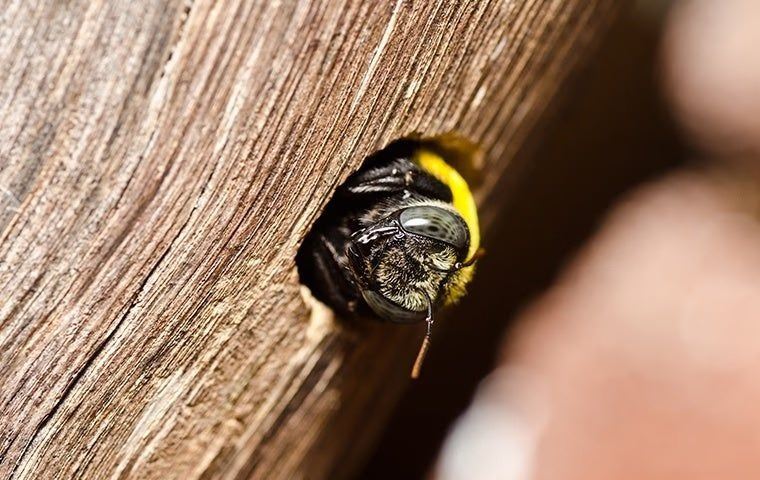
Carpenter Bees Identification & Prevention
Frequently Asked Questions about Carpenter Bees
Have questions? We are here to help. Still have questions or can't find the answer you need? Give us a call at 252-424-7966 today!

-
How can I prevent carpenter bees in the future?
Prevent problems with carpenter bees in Elizabeth City, NC, and surrounding areas by combining our professional services with the following prevention tips:
- Fix leaky hoses and clogged gutters to eliminate sources of water for carpenter bees.
- Place metal flashing on the end of boards used to build wooden play structures.
- Varnish, stain, or paint any wood used to build structures on your property.
- Place metal flashing on the end of deck boards.
- Repair any holes along your roofline.
- Limit the amount of flowering vegetation planted on your property.
- Remove fallen trees, tree stumps, and other excess wood from your property.
- If possible, use hardwoods instead of softwoods to build on your home or business.
- Use a caulking gun to repair any cracks or holes in exterior walls, wood trim, and wood shingles.
-
How do I get rid of carpenter bees?
Professional pest control is the best way to eliminate pests and keep them from returning. At Albemarle Termite & Pest Control, our pest management professionals are highly trained and dedicated to providing safe and effective home pest control services that are affordable. We are a local, family-owned pest control company whose number one priority is putting our customers first and exceeding their expectations. To eliminate pests from your home or business once and for all, contact Albemarle Termite & Pest Control today!
-
Where will I find carpenter bees?Carpenter bees are outdoor pests. While they will nest in wood on the exterior of your property, they don’t regularly move to indoor structures to nest. These pests are active during the day, flying around their nests and flowering plants. Female carpenter bees build their nests in pieces of wood – preferring unpainted, weathered woods. They also like to choose pieces of wood that are more than two inches thick. Softwoods like cedar and pine are carpenter bees’ favorite types of wood in which to build their nest. Fences, decks, outdoor furniture, wooden play structures, wood shingles, and roof eaves are all common carpenter bee nesting sites.
-
Why do I have a carpenter bees problem?If carpenter bees have taken up residence on your property, it's because it provides them a safe place near food sources to nest. Carpenter bees feed on pollen and nectar, and any property with flowers, trees, and other vegetation on it could become home to them. Trees and wooden structures act as nesting sites and also attract them to properties.
-
Are carpenter bees dangerous?
The most significant danger that carpenter bees pose is the structural damage they cause. Females create entry holes about the width of their bodies into pieces of wood, then tunnel through the wood to create nesting galleries – damaging the structure of the wood in the process. This damage can be exacerbated by woodpeckers pecking around the nest entrance to feed on larvae. Like other species of stinging insects, carpenter bees possess venom that is strong enough to trigger allergic reactions in people. It is important to note that male carpenter bees lack a stinger, and female carpenter bees are very docile, making them a bit less of a threat than other stinging insects. However, you should still take caution around carpenter bees and any other stinging insects.
-
What are carpenter bees?
Carpenter bees are a type of wood-destroying pests. These solitary bees are large, and their round, plump bodies make them resemble bumblebees. Adults grow to between 1/2 and 1-1/2 inches. They are mostly black, though some males may have white or yellow faces. The best way to distinguish between carpenter bees and bumblebees is that the abdomen of a bumblebee is covered in hair, while the abdomen of a carpenter bee is shiny and void of hair.



